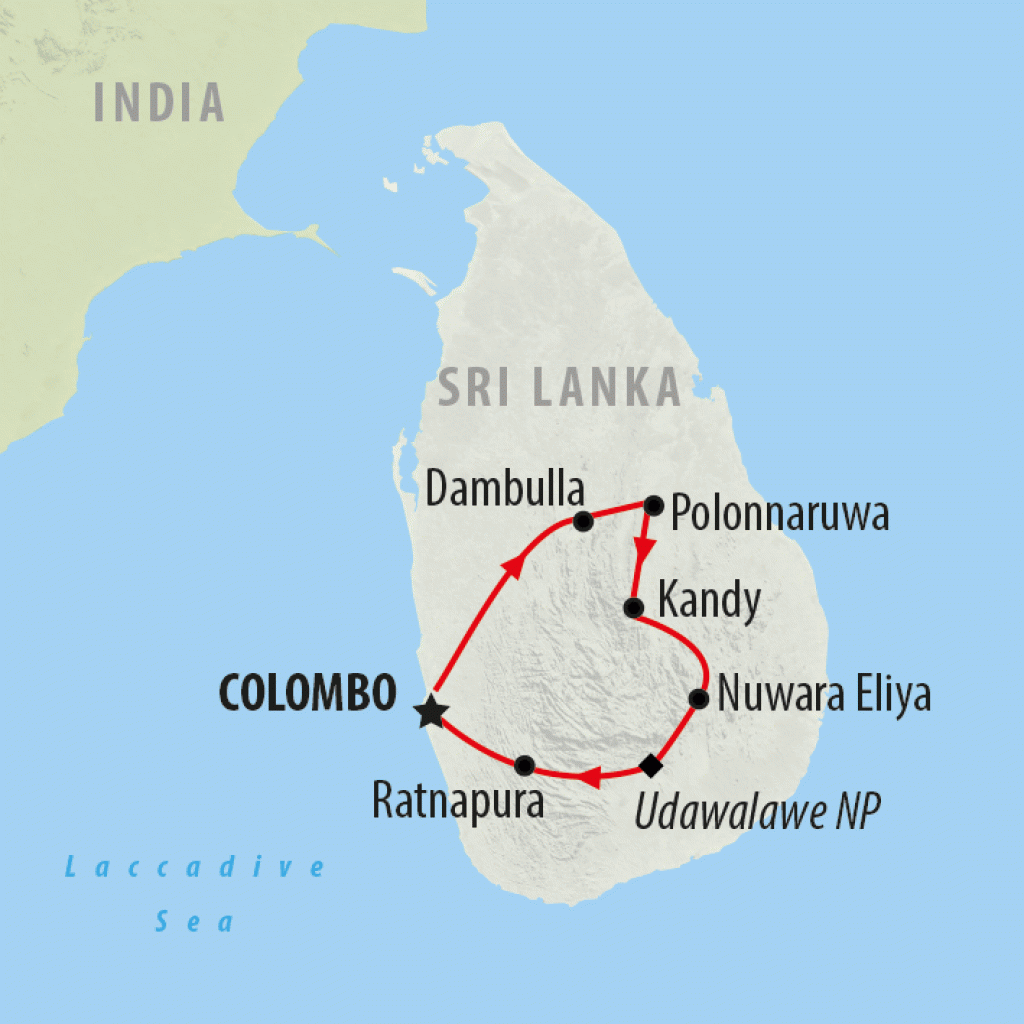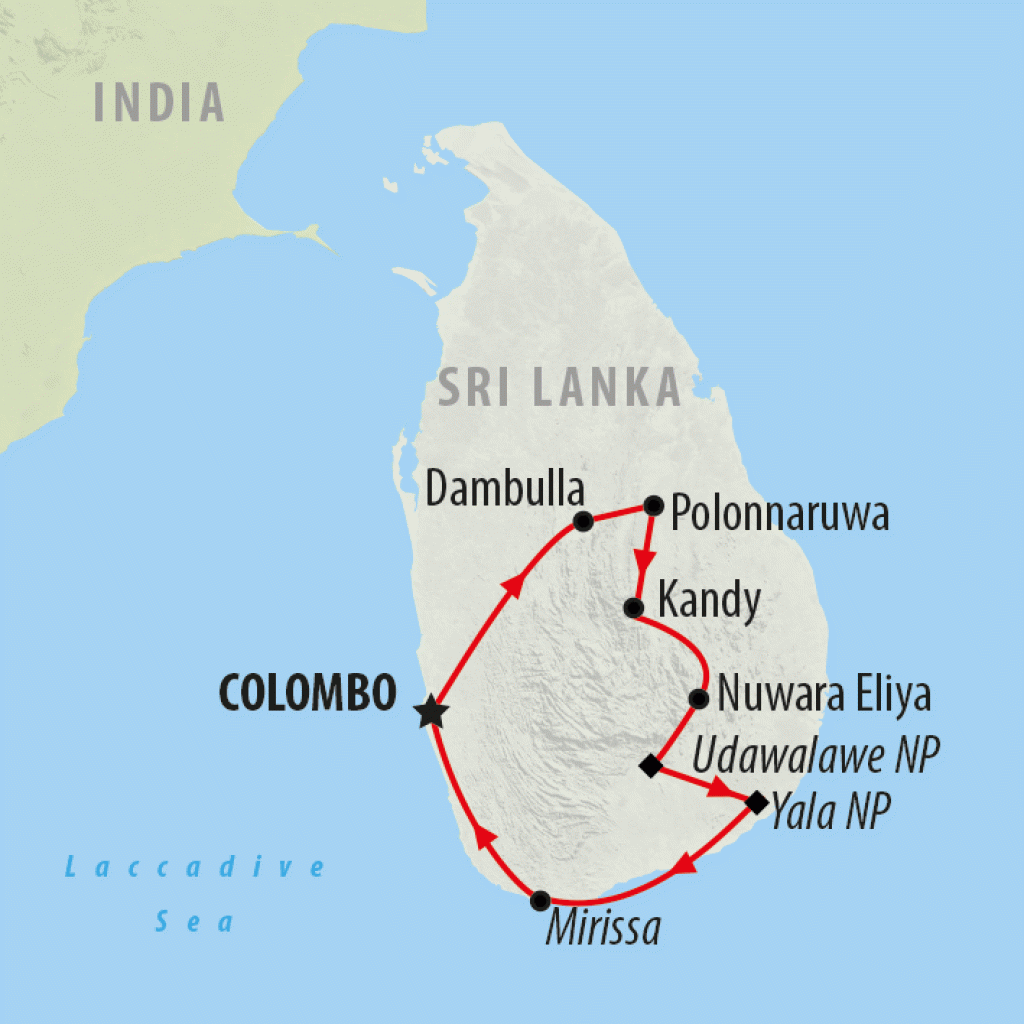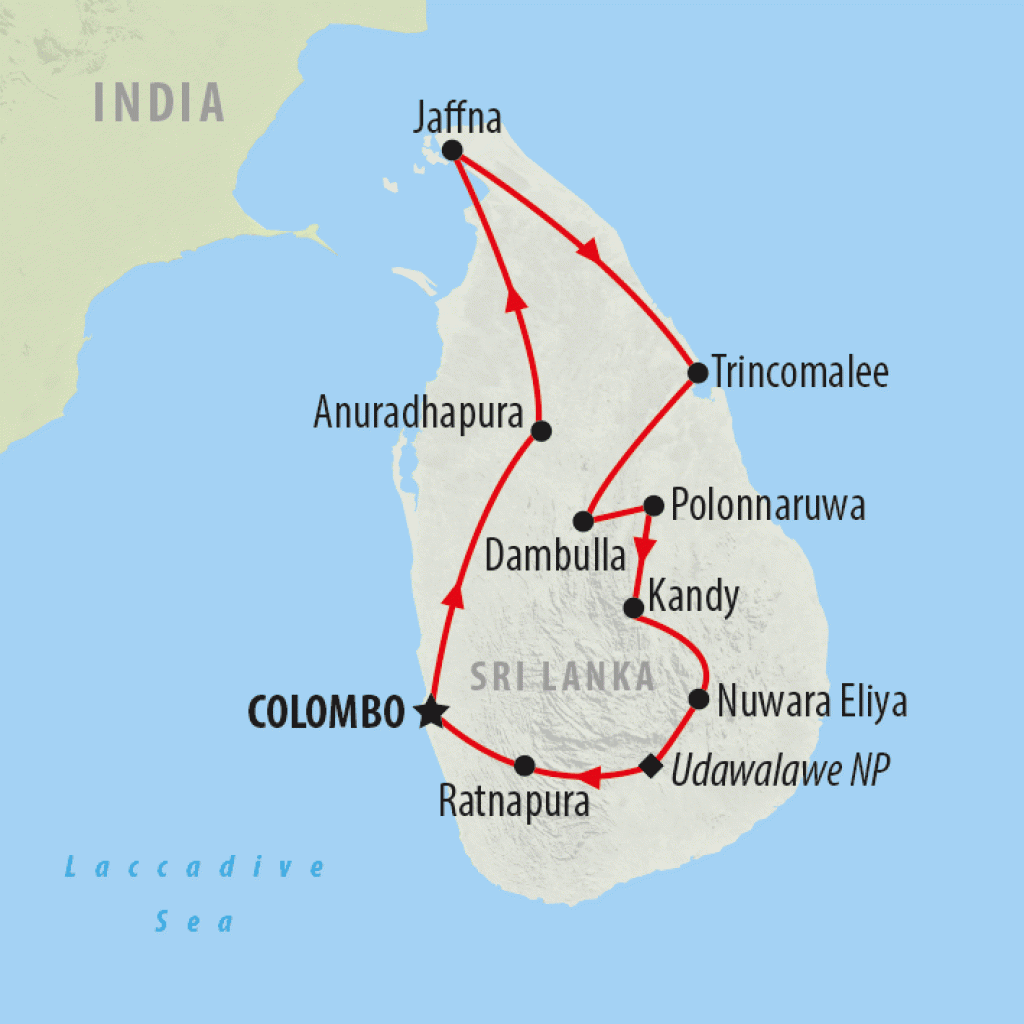The Cultural Triangle
Sri Lanka's famed Cultural Triangle is a treasure-trove of ancient monuments, royal cities and Buddhist temples that once served as the crucible of early Sinhalese civilization. The points of the triangle are marked by the island's three historic capitals - the hill capital of Kandy, the first Sinhalese capital of Anuradhapura and the medieval capital of Polonnaruwa.
Alongside the points of the Cultural Triangle itself, there are a number of spectacular attractions to visit within the region. These include the jaw-dropping Lion Rock fortress of Sigiriya, the sprawling Dambulla Cave Temple, and a number of less-visited sites. These include the mysterious abandoned citadel of Yapahuwa and the forest monastery of Ritigala.
With such a wealth of ancient sites, for visitors to Sri Lanka, the Cultural Triangle is the best place to absorb the island's unique cultural heritage and incredible history. However, it's not all ruins and religious monuments - within Sri Lanka's Cultural Triangle you'll also find the wildlife reserve of Minneriya renowned for its elephants that gather here for the water held in the park's centrepiece tank.
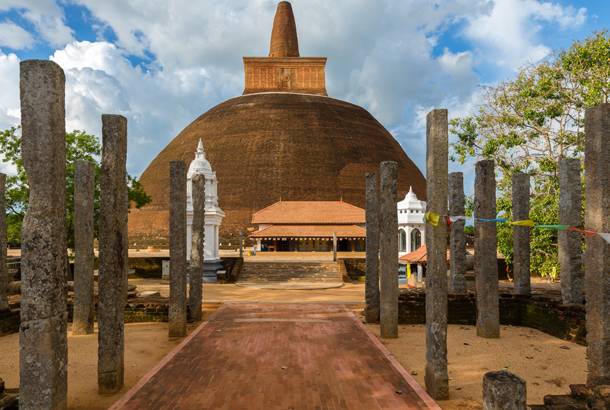
Anuradhapura
Venerated as the capital of Buddhism in Sri Lanka, the ancient city of Anuradhapura is considered one of the country's most sacred, home to a range of significant religious sites. During the height of its prominence the city was dotted with dozens of monasteries spread over a large expanse of the island's northern plains and today these ruinous monuments are a magical place to get to grips with Sri Lanka's illustrious history.
The sheer number of monuments can be overwhelming though the majority of Anuradhapura's main sites are located within the complexes of the three great monasteries of Mahavihara, Jetavana and Abhayagiri. At the heart of Anuradhapura is the sacred Bo tree of Sri Maha Bodhi, believed to be the oldest documented living tree in the world and the site where Buddha received Enlightenment.
Other popular ruins include the remains of the Brazen Palace where 1,600 stone columns stand neatly spaced and the monumental red-brick dagoba of Jetavana, said to be the highest in the world - at the time of its construction it was trumped in height only by the Great Pyramids of Giza. To appreciate Sinhalese sculptural art, check out the 8th century Ratna Prasada, or 'Gem Palace', which contains an exquisite carving of the Serpent King guarding the entrance with an arch framing the figure equally as magnificent.
Thinking of visiting Sri Lanka? Download a copy of our Indian Subcontinent brochure for inspiration.
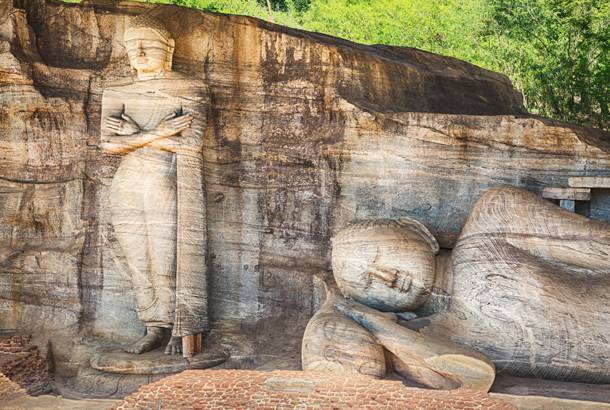
Polonnaruwa
As the capital of the island between the 11th and 13th centuries, the great ruined city of Polonnaruwa represents medieval Sri Lanka at its finest. It took over from Anuradhapura as the capital after the sacred city's destruction and subsequent abandonment though Polonnaruwa is contained within a far more compact area than Anuradhapura beside the shallow reservoir of Parakrama Samudra.
The extensive remains in Polonnaruwa are brilliantly preserved and would have once been enclosed within three concentric walls, of which very little remains standing. The royal palace complex sits in the central Citadel where the city walls have been heavily restored to encompass the imposing base of the Council Chamber and the Royal Baths surrounded by encroaching vegetation.
North of the Citadel is Alahana Pirivena, the Monastery of the Cremation Grounds, which contains some of the city's finest ruins, chief among them the evocative Lankatilaka temple. The towering brick walls of Lankatilaka stand at 17 metres tall, though would have once reached five storeys, and channel attention to the 18 metre high standing statue of Buddha.
Further north lie the group of beautiful Buddha rock carvings of Gal Vihara or 'Stone Shrine'. Chiselled from a single granite outcrop the Buddha images represent the pinnacle of Sinhalese rock carving with four Buddhas in various postures - a graceful 14m-long reclining Buddha, the artistically unusual 7m-tall standing Buddha, and two serene seated Buddhas positioned against a backdrop of splendid artwork.
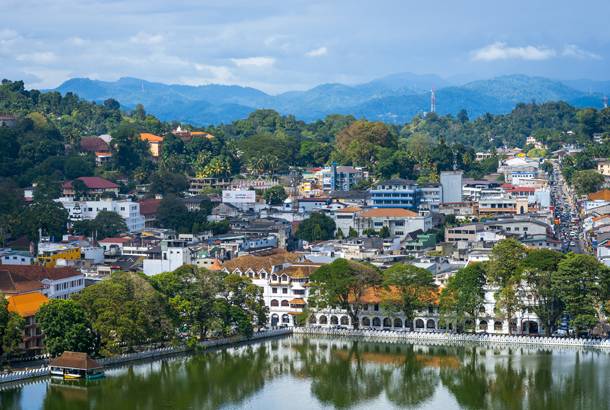
Kandy
Tucked away in the beautiful Sri Lankan highlands, the country's second city boasts a wonderful location next to the manmade Kiri Muhada Lake. Kandy resisted colonial forces long after the rest of the island had been conquered by the Portuguese and Dutch and was able to retain its unique customs, culture, and artistic traditions. It is for this reason that the city is considered Sri Lanka's cultural capital, a must-visit destination for any traveller to the country.
North of the lake set against steep wooded hills stands the golden-roofed Temple of the Sacred Tooth, home to Buddha's Tooth that was brought here in the 16th century. Housed within a two-storey-tall shrine covered by a golden canopy, the tooth is an important object of veneration to Buddhists who come to the temple for worship though it remains out of sight.
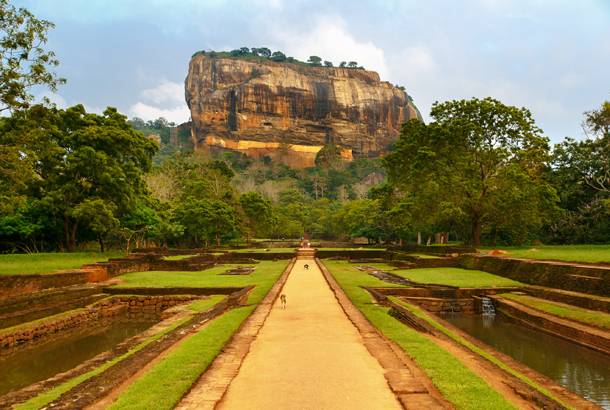
Sigiriya
Rising from the tree-carpeted plains of Sri Lanka's dry zone, the spectacular citadel of Sigiriya sits atop a giant flat-topped rock measuring 200 metres in height. Known as the Lion Rock for the lions that were believed to dwell in the caves, the royal citadel occupies three acres on the summit with the sheer rock face harbouring cave temples and beautiful water gardens at the foot of the rock.
Narrow staircases and walkways snake across the ochre-hued granite rock-face leading to the summit and although a vertigo-inducing climb, the spellbinding views from the citadel are well-worth it. The weatherworn foundations on the summit include the square brick platform of the Royal Palace and the outer wall at the very edge of the rock, as well as number of gardens and ponds.
During the climb up the Lion Rock you'll also be rewarded with a glimpse of the famous fresco gallery of painted damsels positioned under an overhanging rock. This sheltering has meant that the 21 remaining frescoes have survived remarkably well-preserved with colours of red, yellow, green and black still visible. Close to these frescoes is the Mirror Wall, a highly polished white masonry parapet wall that protects a 2m-wide inner passageway along the rock face. The surface of the wall is marked with graffiti, largely comments written in Sinhalese that date back as early as the 7th century.
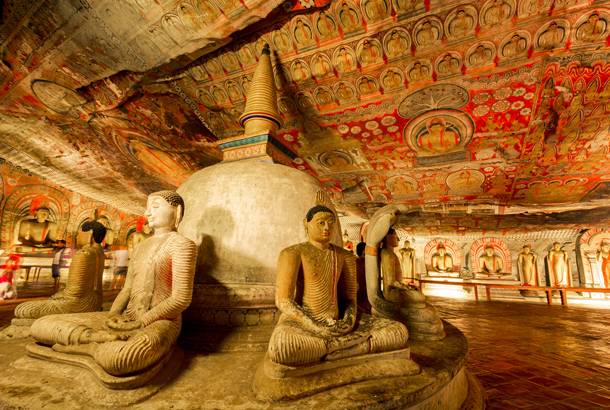
Dambulla
Situated on a towering granite outcrop at the heart of the Cultural Triangle, the richly painted cave temples of Dambulla are the best preserved of their kind in Sri Lanka, dating back to the 1st century BCE and filled with colourful Buddha statues and murals. Constructed as an act of gratitude by a Sinhalese king forced into hiding by Tamils who invaded Anuradhapura and ousted him from his throne, the cave temples are positioned under a large rock overhang with partition walls built to separate the cave into individual temples.
Over the years and well into the 20th century the site has been embellished, remodelled and repainted several times by various kings yet the style and appearance of the art is surprisingly coherent. Today the main attractions of Dambulla are spread across five separate cave temples. The narrow Cave 1 houses a 15m-long recumbent Buddha carved out of solid rock with beautifully painted feet and delicate traces of the gold gilding that would have once covered most of the sculpture.
The largest and most impressive of the caves is Cave 2 with over 150 life-size statues and images of Buddha, and fabulous murals covering the ceiling and walls depicting historic and religious events. Neighbouring Cave 3 also contains its fair share of interesting murals though the highlight of this particular temple is the solid rock meditating Buddha. The relatively small Cave 4 is notable for the dagoba that sits in the centre while Cave 5 is the smallest of the group with brick and plaster Buddha statues.
Useful tip: When visiting the cave temple complex, start in reverse order at the end (Cave 5) so that you can see the different caves in order of their magnificence, ending with the most impressive.
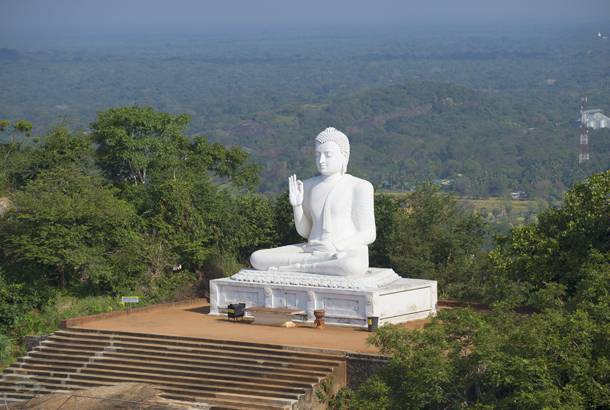
Mihintale
Regarded as the cradle of Buddhism, the temple complex of Mihintale is scattered with shrines and rock dwellings that date back as early as the 2nd century. Surrounded by rocky hills dotted by pretty frangipani trees, Mihintale is actually a mountain peak with 1,850 shallow yet wide granite steps climbing to the summit.
One of the first monuments to be seen is what remains of Kantaka Chetiya dagoba, the earliest stupa at Mihintale with some unique stonework and detailed friezes. On the second terrace is a stone aqueduct and two granite troughs, one of which followers would have filled with food for the resident monks at the adjacent Medamaluwa monastery. In the vicinity are also two large stone tablets with monastery rules and regulations engraved in Sinhala.
Further up from here is Mihintale's sacred centre where the small yet important Ambasthala dagoba stands and, a respectful distance away, a large white-painted Buddha peers down from a raised platform. Pathways lead upwards to the summit and the white Mahaseya dagoba, the largest at Mihintale. From here you can descend via Naga Pokuna - the 'Snake Pond' guarded by a five-headed cobra carving.
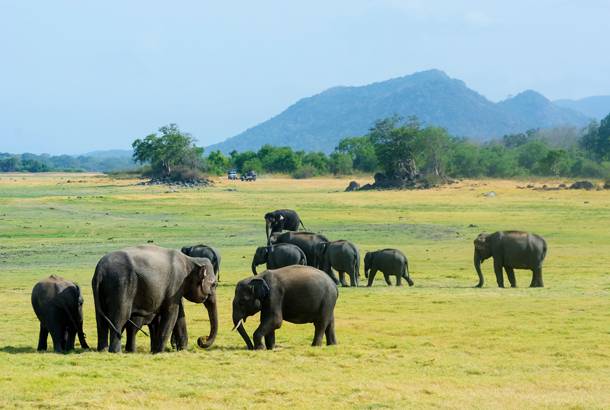
Minneriya National Park
Located in the centre of the Cultural Triangle and offering something of a respite for those suffering from ancient monument fatigue, the Minneriya National Park comprises a variety of lush habitats and wealth of wildlife. Dry tropical forests merge into steamy wetlands home to sambar, spotted deer, macaque, monkeys, sloth bears and even a small number of leopards, as well as plenty of bird species including cormorants, stocks, heron and pelicans.
Not as well known as the national parks of Udawalawe or Yala, the reserve attracts fewer visitors yet is one of the best places in Sri Lanka to see wild elephants. Large numbers of the majestic creatures migrate here between July and October when the various parks in the region begin to lose their water levels.
Thanks to the large centrepiece Minneriya Tank, an ancient reservoir that contains water throughout the year, in August and September as many as three hundred elephants congregate on the shores of the reservoir in an event that has become known as 'The Gathering'. Jeep safaris can be arranged in Minneriya National Park and are the best way of seeing elephants in their natural habitat.
Off the Beaten Track
Interspersed within some of Sri Lanka's most impressive and popular sites, a number of lesser-visited sites are peppered around the Cultural Triangle and make delightful additions to a tour itinerary for those particularly interested in the island's historic monuments. Weeks could be spent visiting all the ruins and sites within the Cultural Triangle so here are a few of the more compelling off-the-beaten-track attractions that can be easily added to a tour around Sri Lanka's cradle of civilisation.
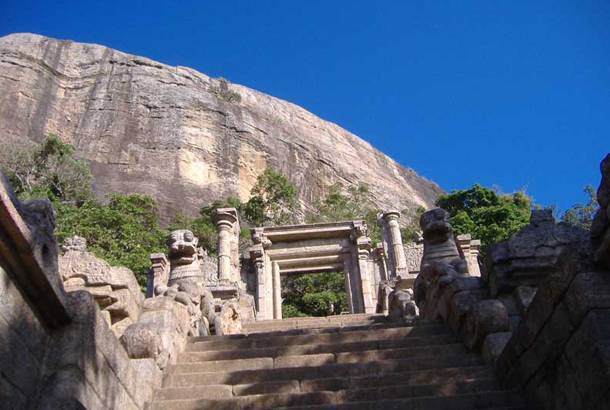
Yapahuwa
One of Sri Lanka's short-lived capitals during the 13th century, the impressive citadel of Yapahuwa may not reach the dizzying heights of Sigiriya but with its setting around the base of a large granite rock, certain parallels can be made. Largely abandoned after South Indians captured the city, the ancient site features a steep ornamental staircase that would have once led to the Tooth Relic held in Yapahuwa, and on to a cave temple with 13th century frescoes. Ongoing work at the site continues to reveal stone ruins at the ancient fortress.
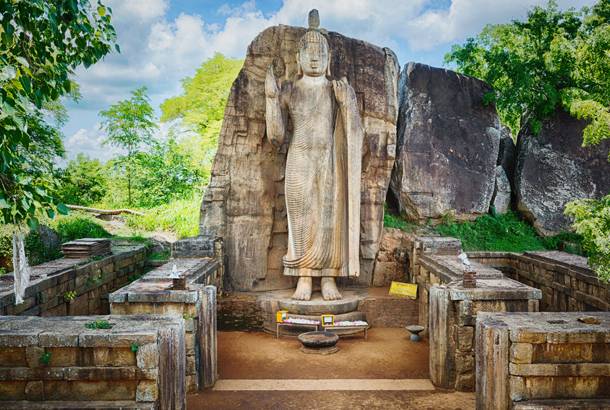
Aukana
Situated 50km southwest of Anuradhapura, the village of Aukana is famous for its 12-metre-tall rock-cut statue of Buddha. The immaculately preserved carving is considered to be one of Sri Lanka's most perfect statues and is likely to date back to the 8th or 9th century. Carved from a single rock the Buddha stands with the right hand raised to his shoulder with palm spread and facing sideways as a symbol of courage. The left hand faces towards his body at his shoulder to draw worshippers away from their earthly bonds.
Useful tip: Visit at dawn to witness the intricate detail of the statue brought to life with the soft morning light.
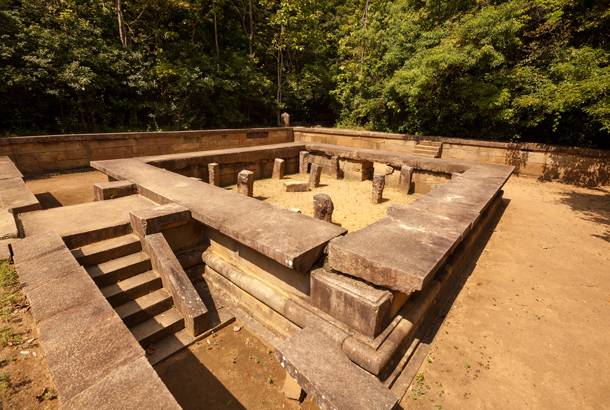
Ritigala
Surrounded by jungle in the rugged hills of the Ritigala Strict Nature Reserve, the broken stone structures of the Ritigala monastery are some of the island's most mysterious ruins. Dating back to the 4th century this forest hermitage complex features several natural caves where monks would have meditated and lived an ascetic existence. Ruined steps lead to the Banda Pokuna tank with restored pathways leading to several sunken courtyards and raised terraces that are thought to have been the monastery hospital and library.
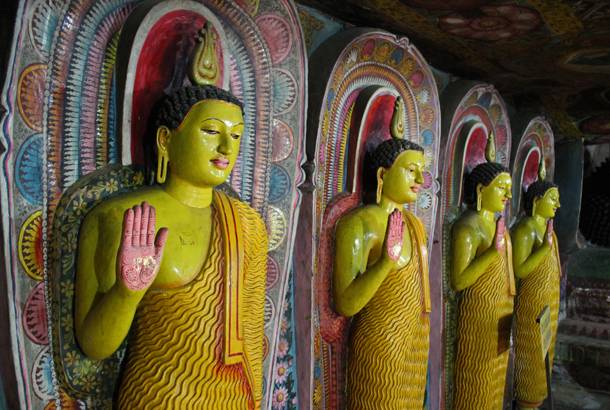
Aluvihara
The modestly sized yet religiously significant monastery of Aluvihara consists of ten cave temples featuring ancient transcriptions and brightly painted frescoes and sculptures. For Buddhists Aluvihara is of particular importance as it was here that the Theravada Buddhist scriptures were first committed to writing. Before then teachings had been passed down orally between generations. As well as a reclining Buddha the cave temples house vivid depictions of punishments that wrongdoers will suffer in the Buddhist hell, from torture racks to vats of boiling oil - not for the faint-hearted!
Best Time to Visit
The best time to visit Sri Lanka's Cultural Triangle is during the drier months of January - March. As well as boasting less rainfall, the days are warm and sunny, making the region ripe for exploration. The months before January tend to be wet with the monsoon rains and after March temperatures rise to the mid-30 degrees centigrade making sightseeing less comfortable. Having said this the Cultural Triangle can be visited year-round if you don't mind the heat or sporadic downpours.
When visiting these ancient sites it's advisable to start early avoiding the worst of the heat and the worst of the crowds. The softer morning light is also better for photography. Break up your day of sightseeing with a late lunch back at your hotel or for something a little more special visit a family-run 'canteen', a sheltered outdoor area attached to a family home with food prepared by local Sri Lankans. By taking an extended lunch you can miss the midday heat and continue touring in the afternoon. Many of the sites open to 6pm-7pm each day so you can stay at the final site of your touring day for sunset.
Planning an Itinerary
With sites located relatively close to one another and a host of accommodation options spread across the sites and nearby towns, there are endless possibilities for touring itineraries. One option is to base yourself at one of the major sites - Dambulla or Sigiriya - and spend a few days exploring the various monuments or another good option is to use the large village of Habarana as your base. Well-located on an intersection of two major roads, Habarana offers a number of upmarket hotels and works especially well if your itinerary includes Minneriya National Park. The village of Giritale, situated between Minneriya National Park and Polonnaruwa, is another good option.
It's possible to cover the major sites of the Cultural Triangle in as little as three days covering Polonnaruwa, Sigiriya, Dambulla and Kandy, and disregarding travel time to and from Colombo. Such a time frame would allow half day tours of each site so if you want a more leisurely pace then allow yourself four days minimum. Anuradhapura deserves a full day with so many monuments spread across a large area though within this day of touring you can also include a visit to Mihintale.
If including Anuradhapura in your itinerary it's worth spending a night here to allow a full day of touring and then transferring to Dambulla or Sigiriya the following day. It's possible to take either morning or afternoon game drives in Minneriya National Park so you could visit for just half a day though if seeing elephants in the wild is important to you then it's definitely worth allowing a full day.
The lesser-visited sites recommended here can easily be worked into an itinerary visiting the major sites. For instance, the rock fortress of Yapahuwa and the Aukana Buddha can be visited on the drive from Colombo to Anuradhapura (allow a full day) while the cave temples of Aluvihara can be visited on the drive to Kandy. The forest hermitage of Ritigala can be combined with Dambulla and Sigiriya in a full day of touring.
Recommended Hotels
There's a good selection of hotels dotted throughout the Cultural Triangle whether it's affordable 3 star accommodation to luxurious 5 star properties with a few boutique options thrown into the mix. Here's some of our favourite properties in the area that add a little something special to any stay in Sri Lanka.
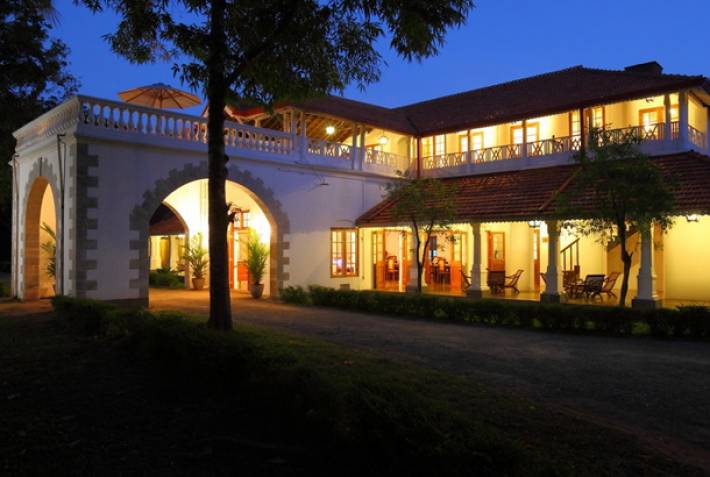
Sanctuary at Tissawewa
Set on 14 acres of lush landscaped gardens the Sanctuary at Tissawewa is one of Sri Lanka’s landmark colonial buildings. With a history spanning over 100 years the property welcomes guests with a selection of 22 elegant and spacious rooms featuring high ceilings and hardwood flooring with modern amenities including TVs and air-conditioning. Its location on the fringe of Anuradhapura makes it an ideal spot to explore the ancient city while enjoying a touch of colonial charm.
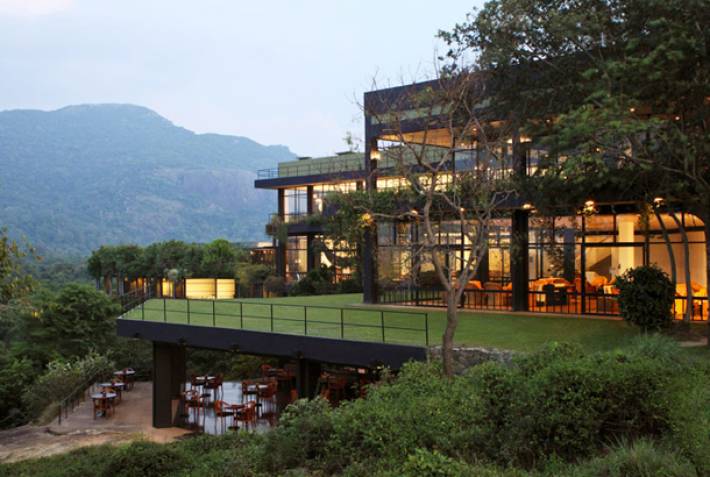
Heritance by Kandalama
Using the contours and colours of the forested slopes on which it sits, the stunning Heritance by Kandalama offers 5 star luxury ensconced by nature. Guests can look out to Sigiriya rock fortress from the hotel's infinity pool or unwind in the spa where ancient Asian traditions are employed. The smart rooms feature contemporary decor with private balconies with views of either the gardens or Sigiriya depending on the wing.
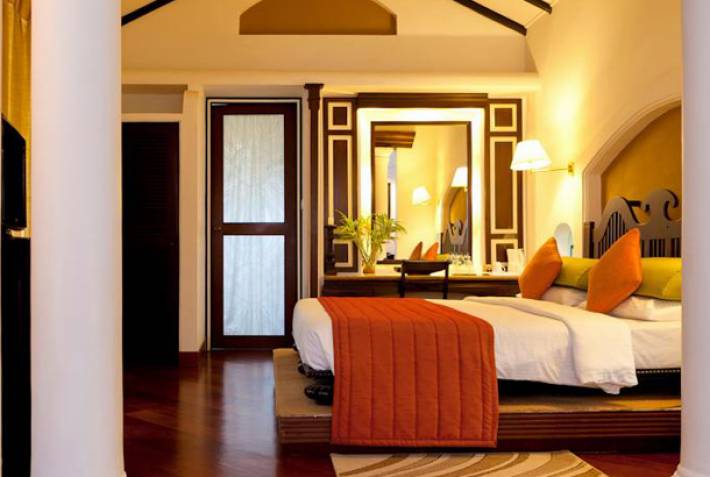
Cinnamon Lodge
Built on a replica of the foundations of the nearby Ritigala monastery ruins, the Cinnamon Lodge is a tranquil retreat in the heart of the Cultural Triangle. The luxurious private cottages feature spacious rooms and suites with raised beds suggestive of royalty. Al fresco dining is available at a number of romantic spots around the property within the privacy of clusters of trees. The Azmaara Spa looks out over the gardens and offers a range of treatments.
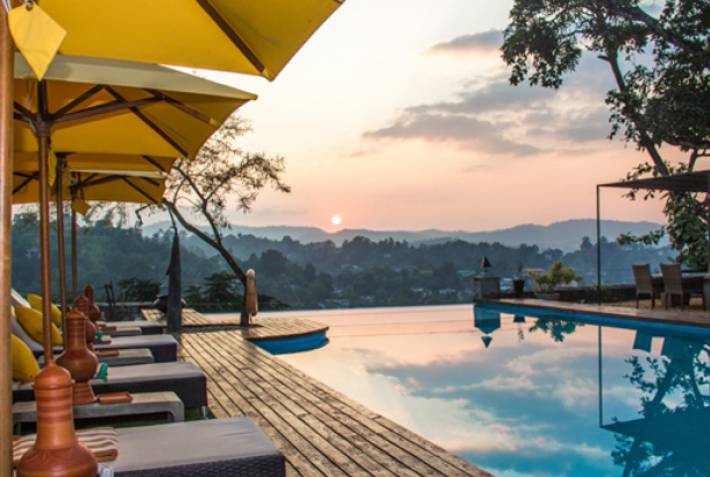
Elephant Stables
The luxury boutique hotel Elephant Stables is set in an old colonial bungalow situated on a hill top with wonderful views of Kandy. As the previous home of Sir Cudah Ratwatte the gardens were once home to a number of elephants, hence the hotel's name, and now offers six unique guestrooms as well as a luxury tented suite. A quiet spot on the lawn is prepared daily for afternoon tea while the designer pool is surrounded by lush foliage and overlooks the hills.
Recommended Tours
Visit the Cultural Triangle on a group tour
Discover Sri Lanka's ancient wonders combined with the tea plantations of Nuwara Eliya and wildlife of Udawalawe National park on our 8 day Colombo Caves and Kandy or add some downtime on the coast with our 12 day Buddha and Beach group tour.
Explore the Cultural Triangle on a private tour
For those short on time consider our 5 day Tear Drop Isle itinerary covering the major sites or for those with more time on their hands check out our 15 day Sri Lanka Encompassed tour to take in Anuradhapura alongside Yala National Park for a chance to spot leopards in the wild.









